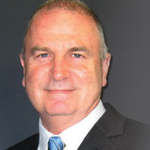- Registration
- Opening Plenary
Good Manufacturing Practices (GMPs) have significantly evolved over time into the current GMPS (cGMPs) we have today, in order to ensure the safety, quality and efficiency of pharmaceutical products. In the beginning GMPs took shape in response to public health tragedies caused by contaminated or poorly manufactured drugs, highlighting the need for rules around manufacture in order to protect the patient. The next major step in evolution to cGMPs resulted from efforts to harmonise GMP standards across the differing global markets. Changes reflect the industry ongoing commitment to ensuring patient safety through the provision of quality products.
How have these changes shaped cGMPs for drug manufacture and how do we achieve aseptic manufacturing excellence in accordance with cGMPs and the requirements of Annex 1 for the Manufacture of Sterile Medicinal Products? These questions will be explored throughout the program beginning with this plenary session featuring Andy Hopkins who was instrumental in drafting the latest revision to Annex during his time with the UK Medicines and Healthcare products Regulatory Agency (MHRA). - Welcome & Opening Remarks by the Moderator
Lisa Bennett - Evolution of GMPs and Why They Are Important For Aseptic Manufacturing
Andy Hopkins - Aseptic Manufacturing Excellence – What Does This Look Like Through the Lens of Annex 1 Requirements
Brent Lieffers - Panel Discussion and Q&A
Brent Lieffers•Andy Hopkins•Lisa Bennett - Coffee Break at the Exhibition Hall
- Session 1 • Regulatory Authorities Collaboration
Peter QiuEfforts with global harmonisation in GMPs began over 40 years ago with significant contributions from organisations such as the World Health Organisation (WHO), The Pharmaceutical Inspection Convention and Pharmaceutical Inspection Co-operation Scheme (PIC/S) and the International Cooperation on Harmonisation (ICH).
Regulatory agencies have long been collaborating to keep up with the demands of the global pharmaceutical industry by fostering opportunities for communication and collaboration by establishing initiatives such as Mutual Recognition Agreements (MRAs) to streamline regulatory oversight.
The International Coalition of Medicines Regulatory Authorities (ICMRA) have been working on further collaborative indicatives with their Pharmaceutical Quality Knowledge Management (PQKM) Pilot Programmes including the Collaborative Hybrid Inspection Pilot (CHIP). With the last of three hybrid inspections executed in May 2024 representatives involved on both sides of the proverbial fence will share their experiences. - ICMRA Efforts to Achieve Regulatory Convergence and Reliance – A Progress Report on the Collaborative Assessment & Hybrid Inspection Pilots
Stelios TsinontidesThe presentation will provide an update on ICMRA's Pharmaceutical Quality Knowledge Management project with a focus on the progress of the pilots on collaborative assessment of post-approval changes and collaborative hybrid inspections. The two pilots completed their initial phase with five collaborative assessments of post-approval management protocols (PACMPs) and three collaborative hybrid inspections, respectively. The presentation will describe in some detail the different cases examined under each of the two pilots, general feedback from the participating industry and Regulatory Authorities, achievements and lessons learned, and perspectives on future direction and potential for expansion and operationalisation of the pilots.
- ICMRA Collaborative Hybrid Inspection Pilot (CHIP): The Industry Perspective
Andrea KurzThis presentation gives an overview about the ICMRA’s Collaborative Hybrid Inspection Pilot (CHIP) from the Industry’s Perspective. The CHIP provides an opportunity to reach agreement from multiple authorities on the compliance of a site with a single inspection activity.
This presentation illustrates a companies’ journey in preparing, organising and hosting a CHIP inspection performed jointly by multiple authorities under the lead of an on-site inspectorate. It talks about the challenges, opportunities and benefits of the CHIP and ultimately how such pilot can further support reliance and convergence efforts. - Q&A Session
Stelios Tsinontides•Andrea Kurz•Peter Qiu - Session 2 • Veterinary Medicine Regulation and Manufacture
Justine MannThe regulation of veterinary medicine manufacture still varies globally despite efforts to harmonise GMPs by regulators and global organisations such as the Pharmaceutical Inspection Convention and Pharmaceutical Inspection Co-operation Scheme (PIC/S) and the Veterinary International Conference on Harmonisation (VICH). Variations in the way regulatory agencies classify and regulate veterinary medicines create further challenges with efforts on harmonisation.
Representatives from the Australian regulator the Australia Pesticides Veterinary Medicine Manufacture (APVMA) and APVMA auditors will provide an update on APVMA expectations, frequently identified issues and changes on the horizon for veterinary medicine manufacture. - APVMA Licensing for Veterinary Medicines
Malcom HammondThis presentation will explore:
• Commonly asked questions related to the cGMP applicable to APVMA license holders.
• What are the Licence holder’s responsibilities and obligations under the existing legislation and
regulation?
• Certificate of Export for Veterinary Medicines.
• Veterinary vaccines using platform technology master files (vPTMF). - Challenges in Auditing Veterinary Manufacturers (Some Personal Experiences)
Steve WilliamsThe veterinary GMPs have been evolving over the last 25 years with a careful balance between full compliance and what’s achievable by manufacturers. There is an enormous diversity in the industry from farm sanitants, to lick blocks and feed supplements to high end sterile injectables and vaccines. The APVMA auditors generally adapt their code GMP expectations based on practical control and product risk to the patient/animal while ensuring companies at all times operate within the Manufacturing Principles and basic GMPs.
This presentation provides a window into some of my experiences using some case examples and also outlines the current framework veterinary medicines auditors and APVMA work within. - Q&A Session
Malcom Hammond•Steve Williams•Justine Mann - Product Demo by CAI: CAI Operational Readiness Model
John WrennDiscover how CAI's Operational Readiness Model can help you to achieve full-scale operations on time and within budget with all your workstreams at peak performance, turns the inevitable issues in every capital project into identified risks which are then mitigated during project delivery, resulting in meeting market demand upon startup.
- Lunch Break
- Session 3 • It All Begins with Good Design
Jo SherriffContamination Control Strategy - it all starts with good cleanroom design. Manufacturing facilities should be appropriately designed to protect medicinal products from potential sources of endotoxin/pyrogen, particulate and microbial contamination. Eudralex / PIC/S Annex 1 encourages the use appropriate barrier technologies such as isolators to increase protection of the product from such contamination. The separation of product from some of the highest risks present in a cleanroom (yes you - people!) creates opportunities and challenges for our aseptic operations. This session will explore some of these opportunities and challenges along with how our cleanroom design might change to accommodate the use of isolator technology.
- Cleanroom Design for Housing Isolators & Modular Cleanrooms: Opportunities & Challenges
Andrew WatsonThis presentation will discuss the requirements for cleanroom design, focusing on the requirements for facilities that want to perform aseptic processes in isolators. It will cover general design concepts regarding layouts, sizing, detailing, HVAC, critical services, controls and alarms. Budgeting and scheduling will also be touched on. Finally, a discussion on the opportunities and hazards of portable facilities. This emerging trend provides significant benefits for some, but not all projects.
- Implementation and use of Isolators – Challenges and Opportunities
Brent Lieffers - Q&A Session
Andrew Watson•Brent Lieffers•Jo Sherriff - Session 4 • Case Studies Part 1
Nadia SeidelThis is the first of two case study sessions providing an opportunity for companies to share a new process or technology they have successfully implemented, whilst often applying problem solving skills, navigating challenges and learning from mistakes.
Whether it be the use of data analytics, technologies or automating processes these implementations help to achieve manufacturing excellence.
These though provoking case studies provide an opportunity for contextual learning from others, whom we guarantee you’ll want to talk further with during the afternoon break immediately following the session. - Case Study 1: Our Learning journey: Vial Drones improving line Operational Efficiencies (with Smartskin)
Andrew Treller•William DyerAnalyzing the impact of various forces on our vials during their journey through machinery has always posed a challenge. However, the introduction of new vial drone technology has improved our line operational efficiency. This advancement has led to a reduction in manual interventions, enhanced machine performance, and a decrease in the number of rejected vials, thereby boosting productivity and saving time.
- Case Study 2 • Automating Single Use Pre Use Post Sterilisation Integrity Testing (PUPSIT)
Micheal Schafferius•Hai TranThe regulatory requirement for Pre Use post Sterilisation Integrity Testing (PUPSIT) has been with us now for many years. The recent review and release of EU GMP Annex 1 has re-focused attention on PUPSIT for many Regulators, Auditors and ultimately manufacturers. This case study will look at the implementation of PUPSIT in a single use process setting with automation.

Micheal Schafferius
Application Specialist for Separation Technologies and Quality at SARTORIUS- HT
Hai Tran
Senior Manufacturing Area Manager – HS&S Filling at CSL Behring
- Q&A Session
William Dyer•Micheal Schafferius•Nadia Seidel•Andrew Treller•Hai Tran
William Dyer
Operational Excellence Associate, Operational Excellence at Pfizer
Micheal Schafferius
Application Specialist for Separation Technologies and Quality at SARTORIUS
Nadia Seidel
Site Operational Excellence Lead at Pfizer
Andrew Treller
Continuous Improvement Specialist, High potent - Production at Pfizer- HT
Hai Tran
Senior Manufacturing Area Manager – HS&S Filling at CSL Behring
- Coffee Break at the Exhibition Hall
- Session 5 • Establishing Programs Supporting the Contamination Control Strategy Part 1
Mylinh LaA robust Contamination Control Strategy (CCS) utilising Quality Risk Management is essential to ensure that microbial, particulate and endotoxin/pyrogen contamination is prevented in the final product.
A CCS should define all critical control points and assess the effectiveness of the controls and monitoring measures employed to manage risk to product quality and safety.
Part 1 of this session will provide a framework on how to establish Environmental Monitoring and Cleaning and Disinfection Programs applying a risk-based approach.
Part 2 will delve further into the building blocks of the cleaning and disinfection program by understanding how to qualify disinfectants for use along with the monitoring and testing of critical utilities like water system to ensure effectiveness of controls. - Establishing a Cleaning & Disinfection Program
Daniel Klein - Environmental Monitoring: Key Elements for Success
Kim Sobien - Q&A Session
Daniel Klein•Kim Sobien•Mylinh La - Day 1 Closing Remarks
Jo Sherriff - Networking Reception
- Registration
- Breakfast Session: Practical Approach to Addressing Microbial Data Deviations
Kim Sobien - Break
- Welcome to Day 2 • Updates from the PDA Australia Chapter and Global PDA Network
Justine Mann•Sadman Bhuiyan - Session 6 • Establishing Programs Supporting the Contamination Control Strategy Part 2
Fergus O'ConnellA robust Contamination Control Strategy (CCS) utilising Quality Risk Management is essential to ensure that microbial, particulate and endotoxin/pyrogen contamination is prevented in the final product.
A CCS should define all critical control points and assess the effectiveness of the controls and monitoring measures employed to manage risk to product quality and safety.
Part 1 of this session will provide a framework on how to establish Environmental Monitoring and Cleaning and Disinfection Programs applying a risk-based approach.
Part 2 will delve further into the building blocks of the cleaning and disinfection program by understanding how to qualify disinfectants for use along with the monitoring and testing of critical utilities like water system to ensure effectiveness of controls. - Contamination Control Strategies for Pharmaceutical Critical Utility Systems
Kim Sobien - Disinfectant Testing and Test Methods
Daniel Klein - Panel Discussion and Q&A
Daniel Klein•Kim Sobien•Fergus O'Connell - Coffee Break
- Session 7 • Testing to Ensure Purity and Integrity of Parenterals
Sadman BhuiyanContamination of parenteral injections is a patient risk factor that should be understood, analysed and controlled. Contamination, whether it be microbial or particulate, combined with the route of administration determines the severity of potential resulting adverse events. It is crucial that we have control strategies in place during product manufacture to mitigate the occurrence of such contamination and preserve the purity and integrity of parenteral products for the length of their shelf life.
Drug products for parenteral administration should be "practically free" or "essentially free" of visible particles and their containers integral to preserve the sterility of the product.
Annex 1 prescribes the use of visual inspection of filled containers by validated methods using a scientifically justified approach. This session will explore the US FDA guidance on the inspection of parenteral products and explain some of the science around container closure integrity testing methods given that visual inspection is not considered as an acceptable integrity test method. - Inspection of Injectable Products for Visible Particulates
Peter QiuThe US FDA published a draft guidance on Inspection of Injectable Products for Visible Particulates in 2021. In the draft guidance, the Agency states that meeting the acceptance criteria outlined in USP General Chapter (790), is not alone sufficient to ensure compliance with the applicable CGMP requirements and full compliance with CGMP requirements is needed to ensure the continued supply of pure, safe, and effective injectable products. This presentation will discuss regulatory expectations on how to develop and implement a visual inspection program and also share case studies on common deficiencies found during regulatory inspections for injectable products.
- Ensuring Container Closure Integrity Throughout the Product Lifecyle
Anthony GeorgiadisThis presentation discusses the regulatory landscape surrounding Container Closure Integrity Testing (CCIT). I will delve into Annex 1, highlighting the recent updates and its regulatory significance. We will explore how regulations shape CCIT strategies and the application of various CCIT methods throughout a product's lifecycle. The discussion will cover critical factors to consider when selecting appropriate methods at different stages of the product lifecycle. By providing a detailed understanding of these aspects, the presentation aims to guide manufacturers on container closure integrity testing in strict compliance with regulatory standards
- Panel Discussion and Q&A
Peter Qiu•Anthony Georgiadis•Sadman Bhuiyan - Lunch Break
- Session 8 • Ask an Expert
Lisa BennettThis session provides an opportunity for attendees to discuss key topics or scenarios with challenges in achieving aseptic manufacturing excellence and take away ideas for solutions or clarification on these challenges. Attendees will be given the opportunity to submit topics for discussion prior to the event with the hottest topics to be polled during the session and the most popular topics discussed.
- Facilitated Discussion on the Challenges in Achieving Aseptic Manufacturing Excellence
Daniel Klein•Brent Lieffers•Andy Hopkins•Peter Qiu•Michael Edey•Kim SobienDuring this session our we will discuss hot topics and challenges with aseptic manufacturing.

Daniel Klein
Senior Manager, Technical Services at STERIS
Brent Lieffers
Senior Director of Innovation Advocacy at Cytiva
Andy Hopkins
Senior Director of Lachman Consultants
Peter Qiu
External Advocacy Lead, APAC at Roche Genentech
Michael Edey
Senior Principal Engineer at Pfizer
Kim Sobien
Senior Microbiology Consultant at ValSource
- Session 9 • Case Studies • Part 2
Craig StephensThe second of our case study sessions providing an opportunity for companies to share a new process or technology they have successfully implemented, whilst often applying problem solving skills, navigating challenges and learning from mistakes.
Whether it be the use of data analytics, technologies or automating processes these implementations help to achieve manufacturing excellence.
These though provoking case studies provide an opportunity for contextual learning from others, whom we guarantee you’ll want to talk further with during the afternoon break immediately following the session. - Case Study 3 • Using Power BI for Data & Metrics Visualisation
Tanvi MaturiDo you find yourself with the laborious task of creating the same report week after week, month after month? Rather than traditionally relying on external IT resources to create intricate automated reports, Microsoft Power Platform is an easy and intuitive tool that can be used by anyone who is experienced in standard Microsoft tools (particularly Excel). This is what is currently in use at CSL Behring, Broadmeadows. This presentation will cover how Power BI and the Microsoft Suite of tools can work together to easily transform raw data into actionable insights that the most basic users can navigate. Microsoft Power BI data flows can be used to share datasets with efficiency and without IT expertise, and allow us to gain control of reporting metrics by creating “One Source of truth” within large scale Pharmaceutical Enterprises.
- Case Study 4 • Qualification of a Rapid Microbiological Method (RMM) • ScanRDI: A Case Study
Riley Fitzpatrick•Robyn HoferScanRDI® has yet to be implemented in Australia and represents a promising advancement in sterility testing, reducing the traditional 14 day test to 1 day.
This advancement addresses critical bottlenecks in product release, particularly for time-sensitive products that require swift testing to avoid expiration.
Our qualification process has confirmed that ScanRDI® meets all necessary performance criteria and regulatory requirements, ensuring its reliability and effectiveness.
The integration of ScanRDI® and the development of product specific methodology positions CBE Pure Solutions at the forefront of modern microbiological testing, enabling us to offer cutting-edge solutions that meet the evolving needs of the industry. - Panel Discussion and Q&A
Tanvi Maturi•Craig Stephens•Robyn Hofer•Riley Fitzpatrick - Coffee Break
- Session 10 • cGMPs Where to Next?
Lisa BennettGood Manufacturing Practices (GMPs) have significantly evolved over time into the current GMPS (cGMPs) we have today, in order to ensure the safety, quality and efficiency of pharmaceutical products. In the beginning GMPs took shape in response to public health tragedies with the next major step in evolution resulting from efforts to harmonise GMP. What will be the catalyst for change in the future? Further regulatory convergence? Sustainability and environmental impact? Digital transformation and Industry 4.0? Another pandemic? Or just more tragedies highlighting additional controls required.
We will hear from current and former regulators on their thoughts about how they see cGMPs evolving in the future for the manufacture of human and veterinary medicinal products. - Facilitated Discussion
Andy Hopkins•Peter Qiu•Malcom Hammond•Lisa Bennett
Andy Hopkins
Senior Director of Lachman Consultants
Peter Qiu
External Advocacy Lead, APAC at Roche Genentech
Malcom Hammond
Director, Manufacturing Quality and Licensing & Assurance (AERP | Recalls | HGP) of Australian Pesticides and Veterinary Medicines Authority
Lisa Bennett
Director of LB Consulting Australia
- Q&A Session
- Closing Remarks
Justine Mann
The information presented at this conference is accurate as of its launch date. However, the organizers retain the right to modify, update, or amend any details as needed. As we aim to provide the most current information and updates, we encourage you to check regularly for any changes.














